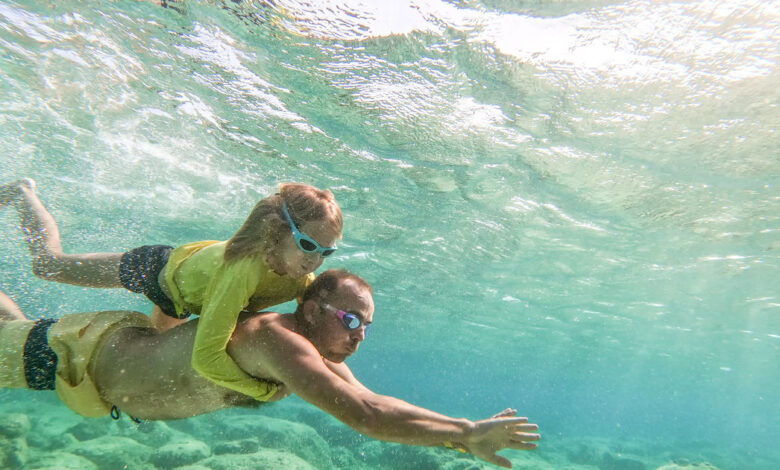Did you know your eyes can get sunburned?

While diligently applying sunscreen on the skin to shield it from the sun, don’t forget that the eyes are equally susceptible to sunburn. Optometrist, Ronela Tavoc, OD, shares tips on protecting your eyes this UV safety month.
Photokeratitis, also known as “sunburn of the eyes,” occurs when the cornea, the clear front surface of the eye, becomes inflamed due to excessive exposure to UV radiation. Tavoc says this condition typically arises from extended periods of sun exposure without proper eye protection, such as sunglasses or goggles. It can also occur from exposure to other sources of intense UV light, such as welding arcs or tanning beds.
Photokeratitis is often associated with environments that reflect UV rays, intensifying their effect on the eyes. Snow, water, sand, and high-altitude locations are common culprits. In such conditions, the eyes receive UV radiation not only from direct sunlight but also from the reflected rays bouncing off the surroundings.
For mild to moderate burns the most common symptoms are very similar to dry eye symptoms but intensified and sudden.
Some symptoms include:
- Eye pain/pain when blinking
- Foreign body sensation
- Red or gritty eyes
- Blurred vision
- Teary eyes, the body’s attempt trying to lubricate the eyes by watering them since they are dried or burned
“The eye is very good at telling us if something is wrong, so it is normal to have some discomfort if you think you have photokeratitis,” Tavoc says. “We have millions of corneal nerves, making the eye one of the most sensitive organs. If you have something, even as small as an eyelash in your eye or small speck of dust, the eyes can feel it.”
Tavoc recommends using preservative-free artificial tears to lubricate the eyes five to ten times a day. If the pain is intolerable, over-the-counter ibuprofen can assist with pain relief. She also recommends using a cold compress over the eyelids for temporary relief. If pain persists for more than a few days, seek professional help.
Severe burns left untreated can lead to corneal scarring and permeant vision loss. Tavoc says long-term UV exposure can be a factor in early cataracts, macular degeneration, and pterygiums or pinguecula, pink or white-colored growths on the eyes.
How to protect your eyes
- Wear UV-blocking sunglasses: Choose sunglasses that provide 100% UV protection.
- Use a wide-brimmed hat: Alongside sunglasses, wide-brimmed hats shield your eyes from direct and reflected UV rays.
- Limit exposure during peak hours: Sun rays are most intense between 10 a.m. and 4 p.m. Whenever possible, avoid prolonged outdoor activities during these hours.
- Stay informed about weather conditions: Check the UV index regularly and plan your outdoor activities accordingly. Higher UV levels indicate a greater risk of eye damage.
- Depending on the brand, contacts can offer some UV protection, but Tavoc recommends wearing sunglasses over contacts for full protection.
Protecting your eyes from the harmful effects of UV radiation is crucial for maintaining good eye health. Learn more about the experts and services offered at the Loma Linda University Health Eye Institute.




